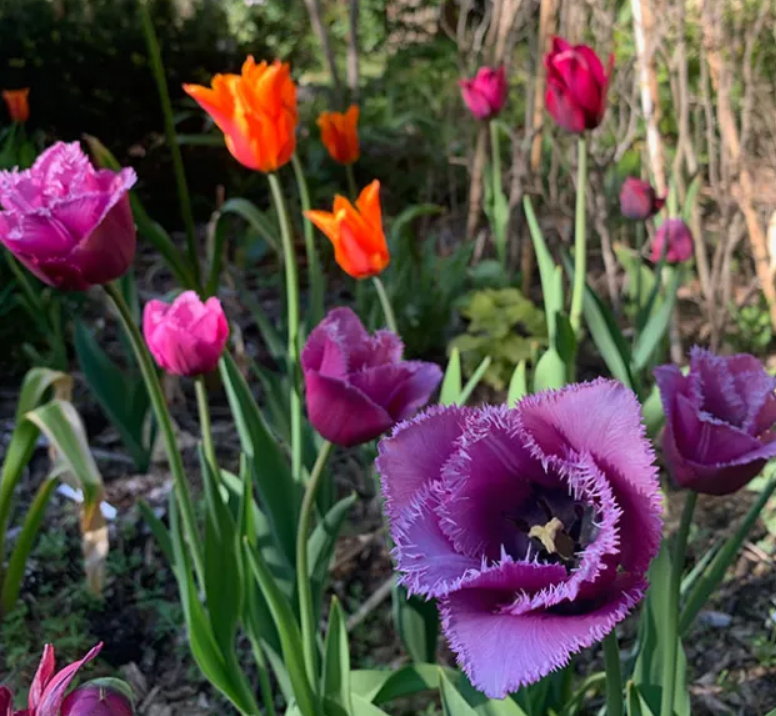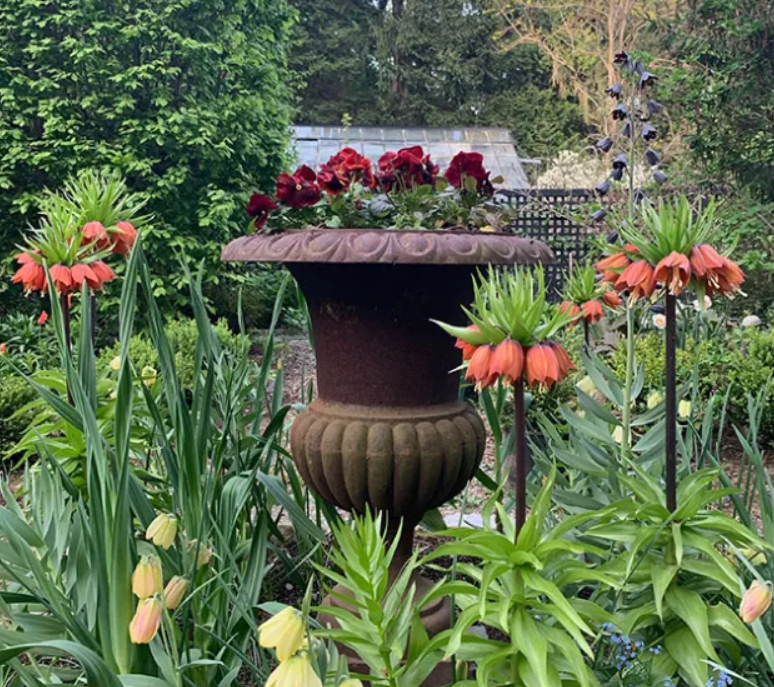For the past two years I have been experimenting with growing a variety of annual vines in containers, trying about 8-10 different varieties of the most common annual vines each year. As you may have discovered for yourself, annual vines like petunias, while beautiful and easy to germinate, can and do grow so fast and vigorous that they can and will often get out of hand before they bloom. Other annual vines however are much neater and easier to manage. I wanted to see which vines were the easiest to manage, which ones were the most beautiful as container plants, and which ones were best left on a trellis or pole.
 All of my grapevine trials are conducted in the same container, a 10-inch deep long tom terra cotta pot. Deep enough to hold 6-foot bamboo poles and heavy enough to keep mature plants from toppling over in strong summer storms.
All of my grapevine trials are conducted in the same container, a 10-inch deep long tom terra cotta pot. Deep enough to hold 6-foot bamboo poles and heavy enough to keep mature plants from toppling over in strong summer storms.
I remember reading once in an old gardening book that one should always approach vines with caution. They are biologically coded to be opportunistic, but once you watch the vines grow, it makes sense. They are designed for the simple purpose of chasing objects quickly to reach the canopy so they can get sunlight and attract pollinators. I was reminded of this in 2019 when I was conducting botanical research in western Europe and saw clematis growing on mountain slopes where they almost completely covered the horizontal branches of evergreens – it looked more like a blizzard had covered each fir tree with a layer of snow. Apparently, clematis are better suited to strolling through shrubs and trees than climbing lamp posts.
These annual peas – the foamy species related to sweet peas – need extra support to climb the bamboo poles. I should have added bird netting or wire fencing around the tower so that the tendrils could catch and grow taller. Other sallow bean species need thin branches to grow, especially if they are not from tendrils.
It’s helpful to know how your vines “climb” as sometimes you may need to add bird netting or wire – if the vine uses tendrils to climb while other vines naturally twine around it, it can even be twinned to wrap the entire conical tent around a support such as a petunia. Then there are vines that do neither, such as dryads and especially yellow-flowered canary vines, which sometimes twine with leafy stems or prefer to tumble and climb over branches in the wild. These will need more help, such as hand tying the new growth with soft yarn or garden twine to get things going.
I’ve tried to focus on the most common annual vines that any of us can find in seed racks or seed catalogues, but I’ve also tried a few more targeted experiments – specifically sweet peas and other annual sallow peas, just to see what’s out there They look like they’ve been grown in pots. Common cut sweet peas – sallow, Spencer varieties, and old-fashioned cut sweet peas – don’t do well in pots, but if the pots are larger than my first attempts at growing the rarer 12-inch pots, they work well. , or unusual species. I will say that what amazes me about these species is how many of them once matured and how unique the foliage and even the seed pods are – often even more interesting than their flowers. The only downside is that they flower early and only for a week or two, then set seed and die. Not long-lived pot plants.



